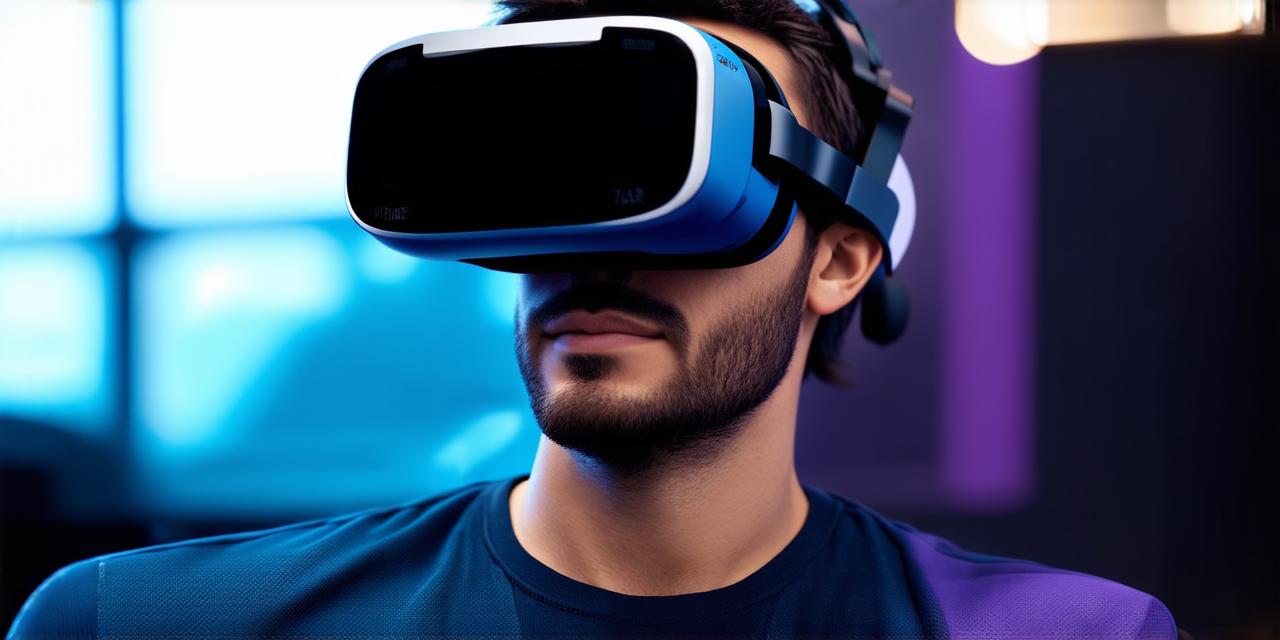Virtual reality (VR) technology has come a long way since its inception, and its applications are increasingly diverse. From entertainment to education, healthcare to training, virtual reality is transforming the way we live, work, and learn. However, one area where virtual reality has shown great promise is in exposure therapy. In this article, we will explore the benefits of virtual reality exposure therapy and how it can be harnessed by virtual reality developers to unlock new possibilities for their creations.
Virtual Reality Exposure Therapy: What Is It?
Exposure therapy is a form of psychotherapy that involves gradually exposing patients to situations or stimuli that trigger anxiety, fear, or other negative emotions. The goal is to help patients learn to cope with these feelings and overcome their fears in a safe and controlled environment. Virtual reality exposure therapy takes this concept one step further by using virtual reality technology to simulate real-life situations and provide a highly immersive experience for patients.
Virtual Reality Exposure Therapy: Who Can Benefit?
Virtual reality exposure therapy can benefit a wide range of individuals, including those with anxiety disorders, phobias, post-traumatic stress disorder (PTSD), and other mental health conditions. It can also be used in the treatment of substance abuse, eating disorders, and even autism spectrum disorders. In fact, virtual reality exposure therapy has been shown to be effective in treating a variety of conditions and improving overall mental health outcomes.
Virtual Reality Exposure Therapy: How Does It Work?
Virtual reality exposure therapy typically involves working with a trained therapist who guides the patient through a series of virtual environments designed to simulate real-life situations that trigger their anxiety or fear. The virtual environments can be customized to suit the individual’s needs and can include a range of stimuli, such as sounds, smells, and visual cues.
The goal of virtual reality exposure therapy is to help patients learn to cope with their fears and anxiety in a safe and controlled environment. By gradually exposing them to increasingly challenging situations, therapists can help patients build confidence and resilience.
Virtual Reality Exposure Therapy: What Are the Benefits?
1. Customizable Experiences
One of the main advantages of virtual reality exposure therapy is its ability to be highly customized to meet the needs of individual patients. Virtual reality developers can create a range of virtual environments and stimuli that are tailored to specific anxiety or fear triggers, allowing therapists to design exposures that are most effective for each patient.
2. Safe and Controlled Environment
Virtual reality exposure therapy provides a safe and controlled environment for patients to confront their fears and anxieties. By simulating real-life situations in a virtual world, patients can practice coping skills without the risk of harm or danger. This allows therapists to gradually increase the intensity and complexity of exposures, helping patients build confidence and resilience over time.
3. Immersive and Engaging
Virtual reality exposure therapy is highly immersive and engaging, which can help to enhance the effectiveness of the treatment. Patients are fully immersed in the virtual environment, providing a more realistic and effective experience than traditional talk therapy or other forms of exposure therapy.
4. Cost-Effective
Virtual reality exposure therapy can be more cost-effective than traditional forms of exposure therapy, as it eliminates the need for specialized equipment or facilities. Virtual reality exposures can be conducted in a therapist’s office or even from the patient’s home, making them an accessible and affordable option for many patients.
5. Scalable
Virtual reality exposure therapy is highly scalable, allowing therapists to treat a large number of patients with varying levels of anxiety or fear. Virtual reality developers can create a range of exposures that are tailored to specific patient needs, providing a flexible and adaptable solution for treating a wide range of mental health conditions.

Case Studies: Real-Life Examples of Virtual Reality Exposure Therapy in Action
Virtual reality exposure therapy has been shown to be highly effective in treating a variety of anxiety and fear-related conditions. Here are some real-life examples of how virtual reality exposure therapy has been used to improve patient outcomes.
1. Social Anxiety Disorder
A study published in the Journal of Consulting and Clinical Psychology found that virtual reality exposure therapy was highly effective in treating social anxiety disorder. Patients who underwent virtual reality exposure therapy showed significant reductions in symptoms compared to those who received traditional talk therapy or no treatment at all.
2. Specific Phobias
Virtual reality exposure therapy has also been shown to be effective in treating specific phobias, such as arachnophobia (fear of spiders) and acrophobia (fear of heights). In a study published in the Journal of Behavior Therapy and Experimental Psychiatry, patients who underwent virtual reality exposure therapy showed significant reductions in symptoms compared to those who received traditional talk therapy or no treatment at all.
3. PTSD
Virtual reality exposure therapy has been shown to be highly effective in treating post-traumatic stress disorder (PTSD), which is a common mental health condition that can develop after experiencing or witnessing traumatic events. In a study published in the Journal of Trauma and Dissociation, patients who underwent virtual reality exposure therapy showed significant reductions in symptoms compared to those who received traditional talk therapy or no treatment at all.
4. Autism Spectrum Disorders
Virtual reality exposure therapy has also been used to treat autism spectrum disorders, which are a group of conditions characterized by social communication difficulties and restricted interests or behaviors. In a study published in the Journal of Autism and Developmental Disorders, virtual reality exposure therapy was shown to be effective in improving social communication skills in children with autism spectrum disorders.
FAQs: Answering Common Questions About Virtual Reality Exposure Therapy
1. What is the difference between virtual reality exposure therapy and traditional talk therapy?
Virtual reality exposure therapy involves using virtual reality technology to simulate real-life situations and provide a highly immersive experience for patients. Traditional talk therapy, on the other hand, involves verbal communication between the patient and therapist to discuss and address anxiety or fear-related issues. Virtual reality exposure therapy has been shown to be more effective than traditional talk therapy in treating some mental health conditions.
2. How long does virtual reality exposure therapy typically last?
The length of virtual reality exposure therapy can vary depending on the specific condition being treated and the individual patient’s needs. Some patients may require only a few sessions of virtual reality exposure therapy, while others may need ongoing treatment for several weeks or months.
3. Can virtual reality exposure therapy be used in combination with other therapies?
Yes, virtual reality exposure therapy can be used in combination with other therapies, such as traditional talk therapy, medication, or cognitive behavioral therapy. In fact, many mental health professionals recommend a combined approach to treatment, which can help to maximize the effectiveness of virtual reality exposure therapy and improve patient outcomes.
4. What are some potential risks or side effects of virtual reality exposure therapy?
Like any form of therapy, virtual reality exposure therapy has some potential risks or side effects. These may include motion sickness, anxiety, or distress during exposure sessions, as well as potential triggers or memories that may be difficult for patients to confront in a virtual environment. However, these risks are generally minimized with careful preparation and guidance from a mental health professional.
Conclusion: The Benefits of Virtual Reality Exposure Therapy for Mental Health Treatment
Virtual reality exposure therapy offers numerous benefits for patients suffering from various mental health conditions. Its immersive and customizable nature allows therapists to create tailored exposures that can help patients overcome their fears and anxieties in a safe and controlled environment. As the technology continues to advance, virtual reality exposure therapy has the potential to become an even more effective tool in the treatment of mental health disorders.
